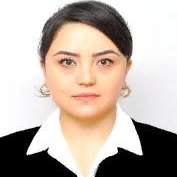International Journal of Education and Management Engineering (IJEME)
IJEME Vol. 13, No. 1, 8 Feb. 2023
Cover page and Table of Contents: PDF (size: 340KB)
Effective Pedagogical Aspects of the Development of Creative Qualities in Students
Full Text (PDF, 340KB), PP.35-40
Views: 0 Downloads: 0
Author(s)
Index Terms
Quality of education, pedagogic skill, creative activity, creative qualities.
Abstract
The current state of society requires students at educational institutions of any level and direction not only to master knowledge and skills that will be useful in their future professions but also have the ability to conduct an active dialogue with colleagues and management, the ability to clearly and persuasively express their point of view, and the ability to be mobile, active, and creative. This study aims to discuss the effective pedagogical approach on creativity of the students. The taken results of this observation contribute to the manifestation of the future specialist's self-development, self-realization, and the embodiment of his or her own ideas, which are aimed at originality. The student's creative abilities develop in all types of activities that are important for every student. The activation of student creativity is designed not only to awaken and maintain interest in various disciplines and modules, but also, most importantly, to help students realize the need to actualize their own creative abilities in educational and professional activities, ultimately leading to the formation of a graduate specialist competitive on the global education system.
Cite This Paper
Juma’zoda Malika, Farruh Ahmedov, "Effective Pedagogical Aspects of the Development of Creative Qualities in Students", International Journal of Education and Management Engineering (IJEME), Vol.13, No.1, pp. 35-40, 2023. DOI:10.5815/ijeme.2023.01.05
Reference
[1]Sh. Mirziyoyev, “Strategy of new Uzbekistan”, Uzbekistan-Press, Tashkent, 2021.
[2]R. Kant, "A Study of Creativity of Secondary School Children as a Correlate of Some Television Viewing Habits", IJMECS, vol.4, no.10, pp.33-39, 2012. DOI: 10.5815/ijmecs.2012.10.05
[3]A. Tilahun, S. Melesse, "An Exploration into the Practice of Traditional Church Education in Ethiopia: Zema-bet Education in Focus", International Journal of Education and Management Engineering (IJEME), Vol.12, No.2, pp. 7-20, 2022. DOI: 10.5815/ijeme.2022.02.02
[4]J. Guilford, “Three sides of intelligence” Psychology of thinking, Progress, 2005.
[5]J.Guilford, “Three Faces of Intellect”, American Psychologist, 14, pp.469-479. http://dx.doi.org/10.1037/h0046827
[6]L. Vygotsky, Psychology. EKSMO-Press, Moskow, 2002.
[7]B. Korotyaev, “Teaching is a creative process: a book for a teacher: from work experience”, 2nd ed.; Enlightenment, 2011.
[8]V.Polonsky, “Dictionary of Education and Pedagogy”, Higher School, 2004.
[9]S. Goldentricht, “Creativity as a philosophical problem”, Creativity and conscious cognition, 1982.
[10]J. Malika, “Pedagogical fundamentals of developing students' creativeness”, International Scientific Conference, Tashkent, 2022. pp.16-19.
[11]N. Farkhodjonova, “Problems of the application of innovative technologies in the educational process at the international level” Innovative trends, socio-economic and legal problems of interaction in the international space, 2016, vol.2, pp. 58-61.
[12]D. Abdurahimova, R, Mavlonova, “Pedagogic skill”, Science and technology, 2012.
[13]V. Akhrorov, F, Ahmedov, K, Norboyev, F, Zakirov, "Analysis of Experimental Research Results Focused on Improving Student Psychological Health", International Journal of Modern Education and Computer Science(IJMECS), Vol.14, No.2, pp. 14-30, 2022.DOI: 10.5815/ijmecs.2022.02.02.
[14]D.Fasko, “Education and Creativity”, Creativity Research Journal, Vol. 13, pp. 317-327. DOI: 10.1207/S15326934CRJ1334_09

